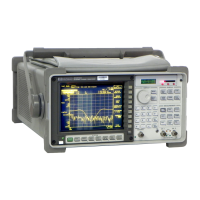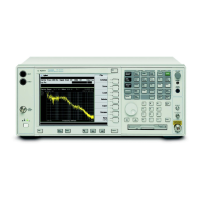Impact Testing
To find natural frequencies, an impulse response measurement can be performed on
the structure and the Agilent 35670A can be used to compute the frequency response
of the structure. An instrumented hammer impacts the structure and an accelerometer
measures the response.
The impact hammer has a load cell that measures the level of force during the impact.
In a modal test, impact measurements are made at various places on the structure. The
resulting frequency functions can be stored for later analysis by a modal software
package.
Impact testing is convenient because it provides shorter measurement times and
requires little hardware. However, it can be difficult to implement the test and to
produce consistent results. It is difficult to control the velocity of the hammer, so the
force level is usually controlled by varying the mass of the hammer. Another
disadvantage is that the force spectrum of an impact test cannot be band-limited at
lower frequencies when making zoom measurements (starting frequency > 0 Hz) so
lower out-of-band modes will be excited.
Choosing a Tip For the Hammer
The frequency content of the energy applied to
the structure is a function of the stiffness of the
contacting surfaces and the mass of the hammer.
It is not feasible to change the stiffness of the test
object, therefore, the frequency content is
controlled by varying the stiffness of the hammer
tip.
The harder the tip the shorter the pulse duration
resulting in a higher frequency content.
A rule of thumb is to choose a tip so that the
amplitude of the force spectrum is no more than
10 dB to
20 dB down at the maximum frequency of
interest.
Hard
Medium
Soft
Pulse
Medium
Hard
Soft
Agilent 35670A
Measuring Structures Operator's Guide
2-8

